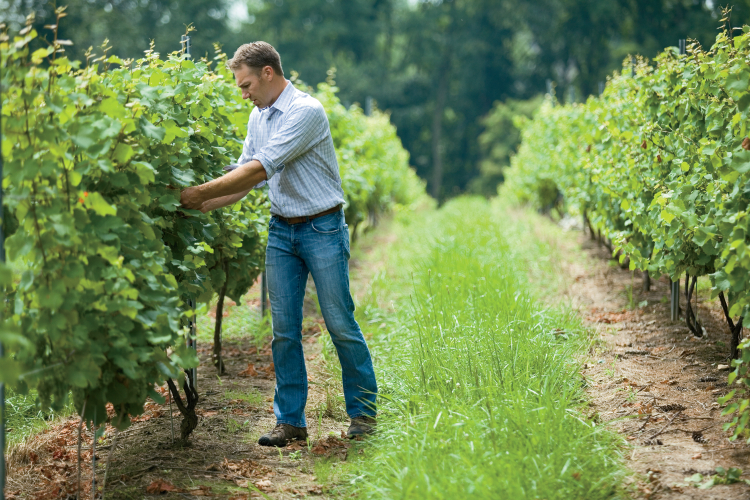Home > Ohio > Ohio Ag Education > Forming Ohio’s Farmers
Forming Ohio’s Farmers
In partnership with: Ohio Department of Agriculture
When Andy Troutman was growing up, his dad, Bob, was the extension agent for Wayne County. That meant that Andy always had a 4-H project.
“My dad would come home with the project book, and I always looked for ones that other kids weren’t doing,” Troutman says.
In 1984, at age 10, Troutman chose to grow grapes. The 4-H project lasted two years, but his interest in it has continued for decades, first as a hobby and now as a burgeoning business.
The owner of Troutman Vineyard in Wooster and The Winery at Wolf Creek in Norton, Troutman credits 4-H with opening many doors for him, both personally and professionally.
“I had the opportunity to take a lot of other projects, from pigs to rocketry to electricity, but this one really stuck with me,” he says.
And so did the 4-H experience in general. While a student at Ohio State University in the early 1990s, Troutman worked at Kelleys Island 4-H Camp in the middle of Lake Erie.
“The area had been covered by vineyards 100 years ago. It had a rich history of winemaking, and homes up there had massive wine cellars,” he says. “But all of that was abandoned by the early ’90s. When I went back to school in the fall, I realized I wanted to learn to grow grapes for winemaking.”
Troutman graduated in 1996 and was going to move to California for graduate school when the owner of The Winery at Wolf Creek offered him a summer job. Four years later he bought that winery, and a year after that he opened up Troutman Vineyards as well.
The timing couldn’t have been better for one of the youngest winery owners in the state.
“In Ohio in 1996, there were 33 or 34 wineries. Now there are 186. So we got into the business in the right place at the right time,” Troutman says.
And when he says “we,” he is referring to his wife and business partner, Deanna. 4-H played a role in that, too. The Troutmans met when they were both working at Kelleys Island 4-H Camp. This year their daughter, Sophia, showed pigs and a horse as part of her second year of 4-H. Their son, Asa, is likely not far behind.
A Valuable Commodity
What is it about these youth programs that make them so valuable? Keith Smith, the director of Ohio State University Extension, says the opportunity that 4-H provides for young people to develop life skills, leadership experience and citizenship makes a difference across the community.
Research from Tufts University backs that up. Their study concludes that 4-H participants are three times more likely than their peers to actively contribute to their communities. The data from this 10-year research project indicates they are also more likely to go to college, to be physically active, to get better grades and to make healthy lifestyle choices.
With more than 236,000 young people between the ages of 9 and 19 participating in 74,667 4-H chapters or clubs in Ohio, that data translates into a lot of positives.
“Through 4-H, young people have an opportunity to pursue a passion where they can be creative and entrepreneurial. They benefit personally, and the community benefits collectively,” Smith says.
Troutman agrees. “4-H gives you a chance to develop leadership skills and interpersonal skills that are extremely valuable no matter what business you go into,” he says. “You learn to take initiative, to take responsibility, to work with other kids, and to understand what it takes to plan and execute something as big as the fair. And when you’re out in the professional world, you find that the shared experience you had in 4-H continues to provide benefits.”






